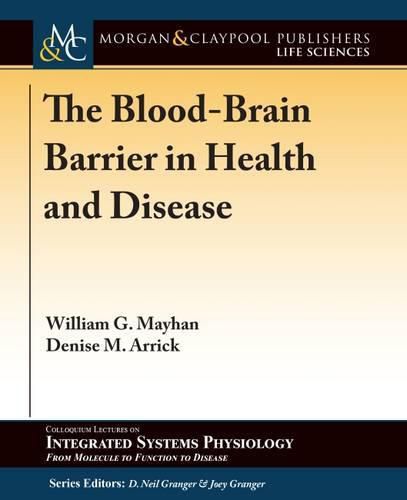Readings Newsletter
Become a Readings Member to make your shopping experience even easier.
Sign in or sign up for free!
You’re not far away from qualifying for FREE standard shipping within Australia
You’ve qualified for FREE standard shipping within Australia
The cart is loading…






The blood-brain barrier (BBB) is a complex and dynamic structure that protects the brain from cells within the vasculature, from the immune system and from pathogens. This barrier is present in arterioles, capillaries and venules and is formed at the level of adjacent endothelial cells, which are coupled to astrocytes, microglia, neurons and pericytes. The structure of this endothelial barrier is unique among endothelia of other organ systems and is composed of complexes made up of tight, gap and adherens junctions. In addition, it is the responsibility of the surrounding cellular elements to maintain the integrity of the junctional complexes and restrict the entry of substances from the blood into the brain. Changes in permeability of the BBB during physiologic and pathophysiologic conditions involve alterations in specific transporters at the level of the endothelium, activation of specific cellular second messenger pathways and/or the dissolution of the junctional complexes composing the BBB. This book focuses on various aspects that account for the formation and maintenance of the BBB, and on disease states that compromise this barrier.
$9.00 standard shipping within Australia
FREE standard shipping within Australia for orders over $100.00
Express & International shipping calculated at checkout
The blood-brain barrier (BBB) is a complex and dynamic structure that protects the brain from cells within the vasculature, from the immune system and from pathogens. This barrier is present in arterioles, capillaries and venules and is formed at the level of adjacent endothelial cells, which are coupled to astrocytes, microglia, neurons and pericytes. The structure of this endothelial barrier is unique among endothelia of other organ systems and is composed of complexes made up of tight, gap and adherens junctions. In addition, it is the responsibility of the surrounding cellular elements to maintain the integrity of the junctional complexes and restrict the entry of substances from the blood into the brain. Changes in permeability of the BBB during physiologic and pathophysiologic conditions involve alterations in specific transporters at the level of the endothelium, activation of specific cellular second messenger pathways and/or the dissolution of the junctional complexes composing the BBB. This book focuses on various aspects that account for the formation and maintenance of the BBB, and on disease states that compromise this barrier.